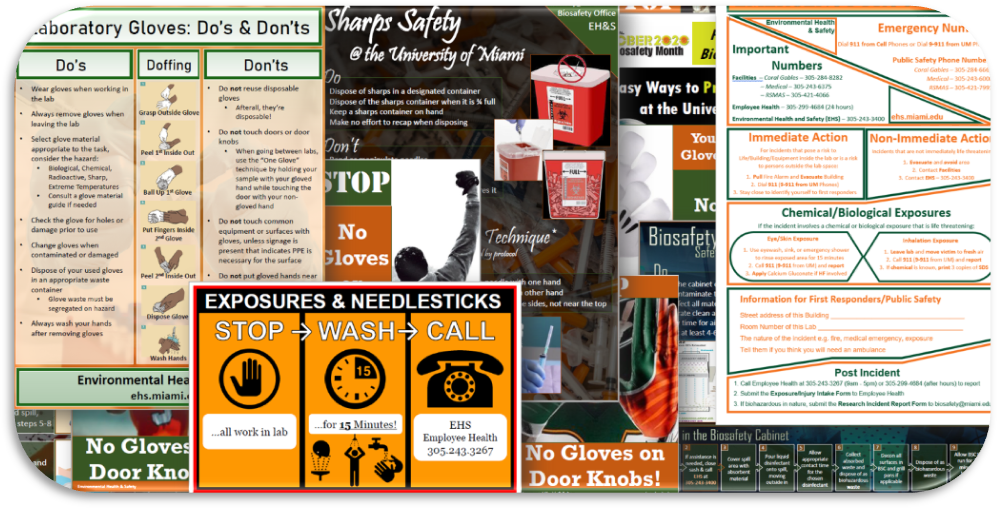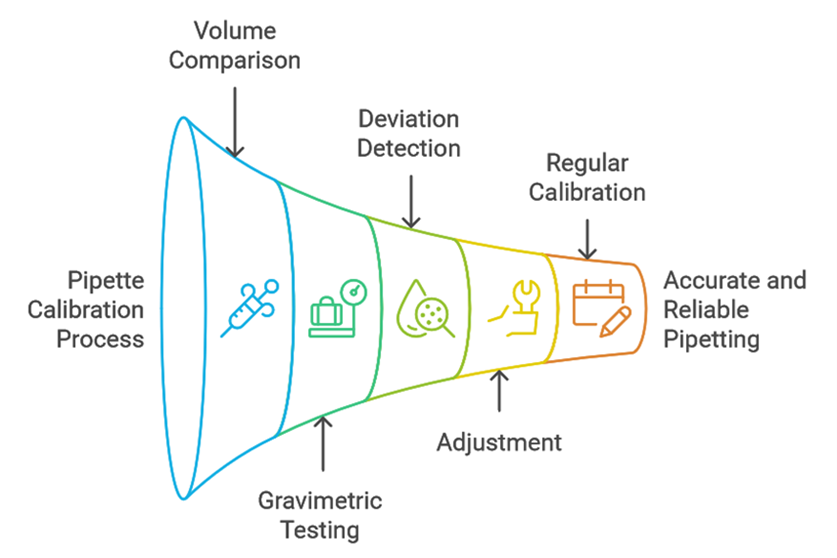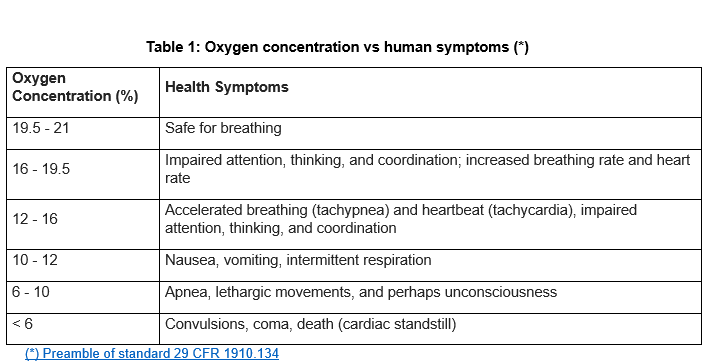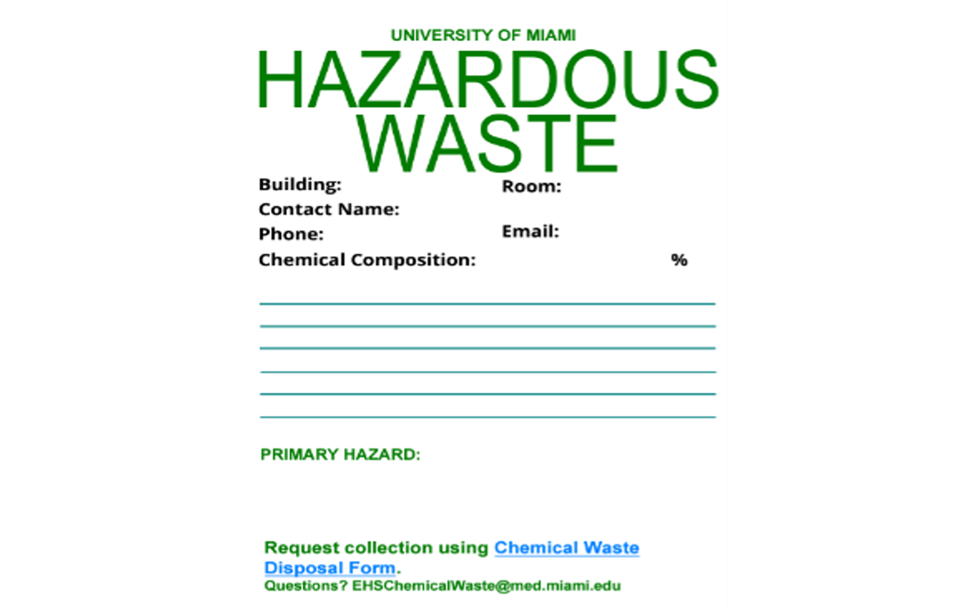Environmental Health & Safety from the Director's Desk
|
|
|
|
Greetings and welcome to a new calendar year! EHS has made resolutions, and we will be delivering on two in particular in the month of February.
First, our Laboratory Safety Awareness Week (LSAW) will be taking place from February 10th through the 14th. Visit with us via Zoom during your lunch break to hear about lessons learned over the last year, current laboratory safety guidance at the University, regulatory updates that may affect your labs, and get to know your safety team. The agenda and the presenters will arrive in a follow up email, so keep an eye on your inbox.
Second, our coveted Laboratory Research Notebook is here, and we resolve to give out several to attendees of LSAW. Some of the give aways will be random simply based on attending and some will be awarded for active participation. We gave out 9 of these during the 2024 LSAW and this year we resolve to exceed that number!
In this edition of the newsletter, you will find a special addition near the end. Please see our special “Extra News” section this quarter to learn about a safety app available courtesy of our University of Miami Police Department. You will also find a helpful guide on pipette calibration and an introduction to a new air monitoring device initiative by EHS.
Warm regards,
Jennifer Laine, DrPH
Executive Director, EHS
|
|
|
|
Utilizing Signage Effectively in Your Laboratory
While a lot of our laboratories use the signage developed by your EHS Biosafety team, many laboratories are still missing posters that we consider critical and necessary for lab operations. These posters are printed on cardstock and available through EHS on request (biosafety@miami.edu), although some laboratories have already been visited and decorated with these essential bits of safety communication. Alternatively, our entire poster suite is available on demand through the EHS Biosafety website on the Resources page.
Some of the posters are available and can be posted by discretion of the lab based on your lab’s individual needs, tasks, and hazards, some of this signage is required to be hung by all labs. Those essential posters are:
- The Lab Safety Information & Emergency Contacts card/poster is required on all lab entrances and is mission critical in the event of an emergency on knowing what hazards are in the lab and who to contact in an emergency.
- The Emergency Procedures poster is full of important numbers and critical SOPs in the event of an emergency and must be posted near lab exits so that it can be easily found by all lab personnel if needed.
- The Stop Wash Call poster briefly outlines the expectations for lab personnel in the event of an exposure so that there is no guess work on what researchers are to do if exposed to hazards in the lab. This includes the necessary steps of ceasing work activities, responding with 15 minutes of immediate response time, and how to report the incident.
|
|
|

|
|
Gearing up for Inspection Cycle 2025
As we gear up for another cycle of inspections for the 2025 calendar year, you can also begin preparations in your lab in a few helpful ways:
- Take a moment to review your inspection results from last year and previous years on BioRAFT (SciShield).
a. If you haven’t already completed and submitted all deficiencies with corrective actions, take the time to do that now. Reach out to EHS if you’re having any difficulties or need assistance on closing out items within BioRAFT.
b. Consider the deficiencies found during the previous inspection cycle and ensure your lab has adopted practices necessary to prevent those items from becoming deficiencies again this year.
- Consider visiting the Laboratory Inspections page on the EHS Biosafety webpage to get a feel for the resources available to you to aid you in preparing your lab for inspections this year. Critical resources on this page include:
a. The Lab Inspection Checklist is available and is updated annually to reflect new line items we will be looking for in the upcoming cycle.
b. The Lab Inspection Cheat Sheet outlines all inspection checklist items and provides detail on why items are a safety concern, how to implement corrective actions if you’re not sure, and where the citation reference comes from requiring the line item.
- Last, be on the lookout for EHS communications when we gear up to visit your building to conduct inspections.
a. We conduct inspections on the Marine campus followed by the Coral Gables campus then end at the Medical campus. We give building occupants a two weeks’ notice on our arrival, however our schedule of what building we are hitting in what month is normally finalized February to March prior to the 1st inspections of the year, so please reach out to us for specifics if you need more preparation time.
b. When we send notifications there will be resources for the inspection along with a link for selecting a time for when you’d like your inspection to be conducted. Selecting a time that you or someone from the lab is available to walk the space with us is critical to get the most out of the inspection. We aim to work collaboratively with our research labs to correct hazards and build a safety of culture across our campus, and we cannot do that without you!
For more information, please contact us at biosafety@miami.edu .
|
|
|
|
Setting Up a Pipette Calibration Schedule: Why it matters
If your lab uses a pipette, consider this your reminder to review or establish a calibration schedule. Pipettes are one of the most frequently used tools for measuring liquid volumes in the lab. Like any mechanical device, regular use can cause wear and tear, leading to potential malfunctions and errors that may be subtle, random or eventually noticeable. It’s essential, therefore, to include pipette calibration in your quality control measures for all laboratory instruments.
The importance of calibrating your pipettes can be summarized in three key points:
- Accuracy and precision: verifying proper functioning minimizes errors and leads to consistent, reproducible results to meet regulatory standards and maintain quality controls.
- Data integrity and reliability: minimizing flawed data enhances the credibility of your findings.
- Efficiency and resource management: avoiding unwanted repetitions, saving you time and resources.
Your calibration frequency can vary depending on the type of material being used, how the pipette is stored and handled, and its overall usage. Generally, calibration should be performed at least once a year. This can be an excellent opportunity to train new lab members on the process. Alternatively, you can contract with a third-party company to handle the calibration, especially in a high-volume work environment.
In summary, ensuring the proper functioning of our instruments is crucial for our daily activities, accountability, and safety. Calibration and documentation of instruments are just as important as their usage. Identify your pipettes, check their calibration status, develop a schedule, and make certain it’s being followed.
|
|
|

|
|
For more information, please contact Noelia Estevez de Rosario (nxe155@med.miami.edu).
|
|
|
|
The Importance of Oxygen Monitoring in Laboratories
The use of asphyxiant gases such as nitrogen, argon, and helium is common for various research and experimental purposes. These gases, however, whether in cryogenic liquid or compressed gas states, pose significant risks if not properly monitored. This article highlights the importance of oxygen monitoring in these environments, underscores the need for maintaining these devices, and encourages laboratories to register their current oxygen monitoring equipment with EHS .
Health Risks Associated with Asphyxiants
Asphyxiants are substances that can cause unconsciousness or death by suffocation. They work by displacing oxygen in the air, leading to an oxygen-deficient atmosphere. Simple asphyxiants, like nitrogen, argon, and helium, do not have other health effects but can be deadly when they reduce oxygen levels below the safe threshold. Inhaling an atmosphere with insufficient oxygen can lead to symptoms such as dizziness, shortness of breath, and loss of consciousness, and in severe cases, can be fatal within minutes.
|
|
|

|
|
Typical Uses of Asphyxiant Gases in Academic and Research Laboratories
In academic and research laboratories, asphyxiant gases are used for a variety of applications. Nitrogen is often employed for preserving biological specimens, creating inert atmospheres for chemical reactions, and operating cryogenic equipment. Argon is used in gas chromatography and as a shielding gas in welding processes. Helium is utilized in cryogenics, as a carrier gas in gas chromatography, and in nuclear magnetic resonance (NMR) spectroscopy. These gases are essential for many scientific procedures but require careful handling and monitoring to ensure safety.
The Importance of Monitoring Oxygen Depletion
Monitoring oxygen depletion is crucial in laboratories where asphyxiant gases are used. An oxygen deficiency monitor continuously measures the oxygen levels in the air and alerts personnel if levels drop below a safe threshold. This is vital because asphyxiant gases are colorless and odorless, making it impossible to detect their presence without proper monitoring equipment. In the event of a gas leak or accidental release, an oxygen monitor can provide early warning, allowing for timely evacuation and intervention to prevent accidents.
Proper Maintenance of Oxygen Monitoring Devices
Maintaining oxygen monitoring devices is essential to ensure their reliability and accuracy. Regular calibration and testing of these devices are necessary to confirm they are functioning correctly. Calibration and maintenance should follow the manufacturer's specifications. Additionally, oxygen monitors should be equipped with local alarms that are both audible and visible, ensuring that alerts are noticed promptly. Proper maintenance not only extends the lifespan of the devices but also ensures the safety of laboratory personnel.
Register Current Oxygen Monitoring Devices!
To enhance safety and compliance, we encourage all laboratories to register their current oxygen monitoring devices. By registering, laboratories can receive updates on best practices, maintenance schedules, and new safety regulations. Please visit Link to register your devices and ensure your laboratory remains a safe environment for all researchers, faculty, and students.EHS is working to assist in calibration and maintenance, but we can only do this if you make us aware of your devices!
If you have any questions or would like a consultation, please contact Adrian Hernandez Ferrer (arh38@med.miami.edu).
|
|
|
|
Avoid Leaving Unwanted Items in the Corridor
Removing unwanted items from building corridors is essential for safety, accessibility, and aesthetics. Cluttered corridors can impede emergency evacuations, hinder maintenance tasks, and create an unwelcoming environment.
The Surplus Property Department manages requests for disposing of university owned items across all campuses and satellite locations.
To request the disposal of surplus items like furniture, cabinets, microscopes, or other laboratory equipment, complete the surplus transfer form. For data storage devices (computers, laptops, PCs), use the e-waste surplus transfer form. Once completed, email the forms to surplusproperty@miami.edu to schedule a pickup.
Use the surplus transfer form for discarded office furniture and laboratory equipment:
|
|
|
|
Use the e-waste surplus transfer form for discarded data storage devices:
|
|
|
|
Let’s all work together to keep the corridors free and clear of all obstructions. A well-organized corridor contributes to a safer and more pleasant building environment, enhancing the overall experience.
For more information, please contact Christine Daley (c.daley@miami.edu).
|
|
|
|
Label Your Hazardous Wastes
|
|
|
|
Proper labeling of chemical waste is an important aspect of lab safety and a cornerstone of waste management. At a minimum, all chemical wastes need to be labeled with the contents of the waste. If the waste is a solution or mixture of chemicals, the percent composition of each constituent needs to be marked.
Hazardous Waste Labeling
- If your chemical waste is hazardous, it must be labeled “Hazardous Waste”.
- Hazardous wastes are also required to be marked with an indication of the hazard: Flammable, Corrosive, Toxic, Reactive.
- The lab may choose the best way to indicate the hazard. The list below and the included graphic are examples of what can be used to satisfy this requirement.
- DOT Placards
- GHS Pictograms
- NFPA 704 Diamond
- Written indication
|
|
|
|
• EHS has compliant labeling in the form of a fillable pdf (see picture below) that can be printed and affixed to the waste.
|
|
|

|
- If you need any assistance with determining if your waste is hazardous or with labeling, please contact the EHS Hazmat group for a consultation.
Proper Containment of Hazardous Waste
Hazardous waste containers must be closed, except when adding waste. These containers should be compatible with the waste it is holding and be in good condition with no visible cracks of other damage. Your Satellite Accumulation Area (SAA) should be large enough to hold your hazardous waste containers, with secondary containment. Secondary containment can be simple – in general, a plastic bin large enough to contain a spill from your largest container in the area will suffice. If you have questions or need recommendations, please feel free to reach out.
As always, when you are ready for waste to removed, please submit a signed Chemical Waste Disposal Form to EHSChemicalWaste@med.miami.edu for disposal.
These forms can also be found on the EHS website under the Environmental Protection & Hazardous Materials tab. If you have any additional questions, feel free to reach out to Brian Cumbie at bxc933@miami.edu .
|
|
|
A Virtual Safety Escort at Your Fingertips: Rave Guardian (UGuardian) Safety App
Turn your phone into a personal safety device. The Rave Guardian safety app can be used to check in with family, friends, campus safety, or others you trust to help you stay safe.
Rave Guardian is a free smartphone safety app which UM students, faculty, and staff can download on their IOS or Android devices.
This app allows the user to pre-register emergency information, utilize virtual trip safety escort, and a one touch call button to the University of Miami Police Department (UMPD).
Download the Rave Guardian app from your smartphone's app store (App Store or Google Play) using one of the links below, then register the app using your University of Miami email address.
Here’s a short video about UGuardian and its useful features:
|
|
|
|
Need more information or have any questions?
|
|
|
|